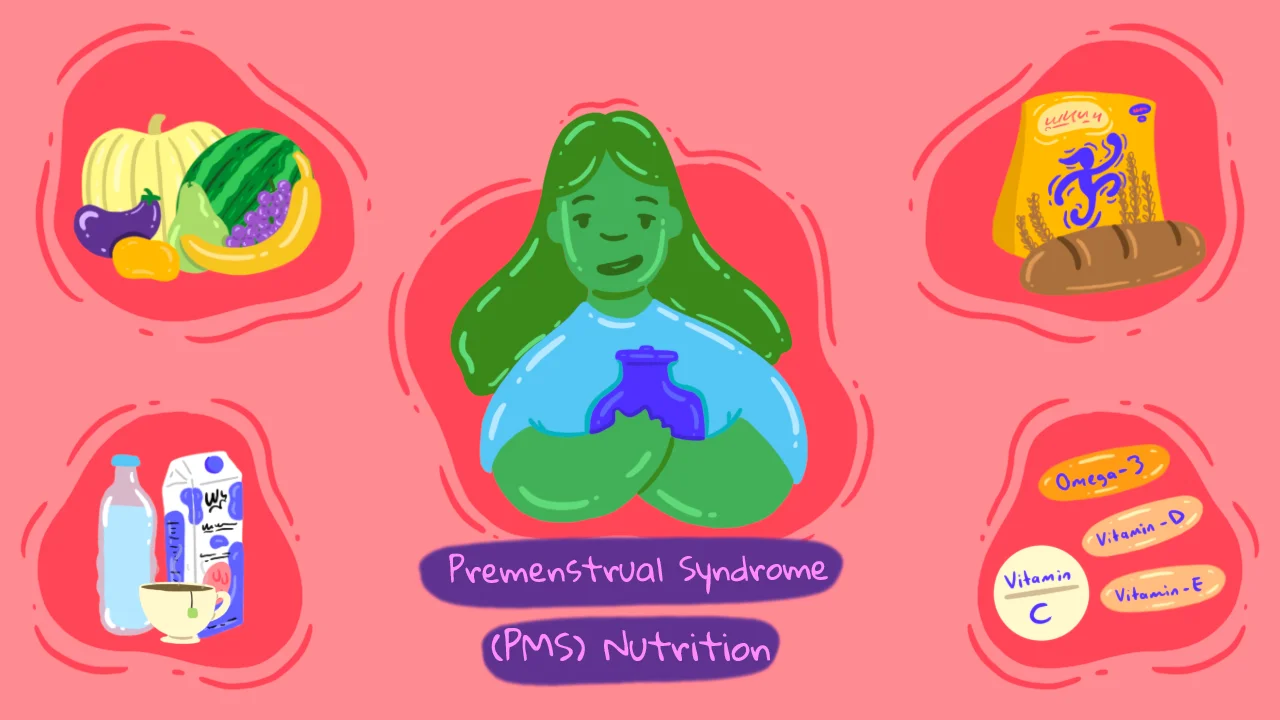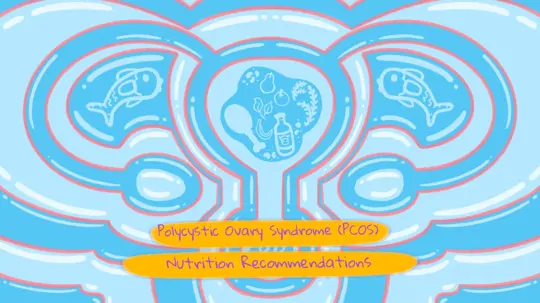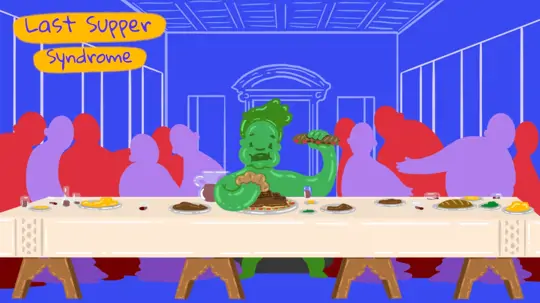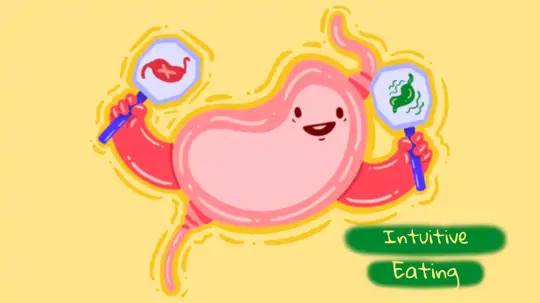
Start feeling better today!
Connect with your therapist today and take control of your life like our 850.000 happy clients.
Get StartedWhat is Premenstrual Syndrome (PMS)?
PMS, short for premenstrual syndrome, refers to the condition experienced before menstruation. Women may frequently encounter this condition in themselves or in people around them. According to studies, the number of women who experience PMS is not small.
PMS can typically begin around 10 days before the start of menstruation and is expected to end once the period begins. Unfortunately, PMS can significantly affect a woman’s quality of life. The severity of symptoms varies from person to person—some may experience them intensely, while others may only feel them mildly. Although the exact cause of this syndrome is not fully known, it is believed to result from sudden fluctuations in hormone levels.
These fluctuations can also affect a person’s mood and physical state. Premenstrual syndrome can include a variety of signs and symptoms that vary widely from person to person. Symptoms include mood swings, fatigue, breast tenderness, and depression. You may be wondering: Do we have to deal with this discomfort before every cycle? Isn’t there any solution or relief?
Experiencing these intense symptoms continuously can seriously lower one’s quality of life. Unfortunately, there’s even a more severe version of this syndrome that qualifies as a disorder. So, what can we do to eliminate or at least ease the severity of these symptoms? We can avoid letting these problems control our lives. Lifestyle changes and treatments—such as adjustments in nutrition, sleep, stress management, and exercise—can help manage and reduce PMS symptoms and signs.
Emotional and Behavioral Symptoms of PMS
- Anxiety
- Depressed mood
- Mood swings
- Changes in appetite and cravings
- Insomnia
- Changes in libido
- Poor concentration
Physical Symptoms of PMS
- Joint pain
- Headache
- Fatigue
- Weight gain due to fluid retention
- Abdominal bloating
- Breast tenderness
- Acne
- Constipation or diarrhea
- Alcohol intolerance
For some women, the physical pain and emotional stress can be severe enough to interfere with daily life. The intensity of symptoms and signs of PMS generally subside within a few days after the menstrual period begins. However, some women experience these symptoms very severely and every month.
What Causes Premenstrual Syndrome (PMS)?
Although the exact causes of PMS are not clearly known, there are several contributing factors to this condition.
1. Cyclical Hormonal Changes
The signs and symptoms of premenstrual syndrome occur along with hormonal fluctuations. These signs and symptoms are experienced during a woman’s reproductive years and disappear once the menstrual cycle ends with pregnancy or menopause.
2. Changes in Brain Chemistry
Fluctuations in serotonin, a brain chemical known as a neurotransmitter, may trigger PMS symptoms. Low serotonin levels can lead to premenstrual depression, which can cause fatigue, sleep problems, and food cravings. So now we know why we want that chocolate ice cream or chocolate bar—it’s because of the rapid drop in serotonin levels in our brain!
3. Depression
Some women who experience PMS may have undiagnosed or previously undiscovered depression, which can indirectly increase the severity of symptoms. However, depression alone is not the sole cause of these symptoms.
How is Premenstrual Syndrome (PMS) Diagnosed?
There is no specific physical finding or lab test to diagnose PMS, or premenstrual tension syndrome. To help define PMS, one can track the signs and symptoms experienced during at least two menstrual cycles using a calendar.
Time to Start Journaling!
Get your pen and notebook ready. You can note the first day you experience PMS symptoms and the day they disappear. Be sure to also record the start and end dates of your menstrual period. This way, you can discover which symptoms you experience, how intensely, and when. This can help you develop easier solutions.
Previously undetected issues such as thyroid disorders, depression, and anxiety—which contribute to hormonal changes—may also be identified during this time.
What Helps During Premenstrual Syndrome (PMS)?
1. Enjoy foods rich in calcium and zinc.
Some studies have shown that calcium supplementation in women with low serum calcium levels significantly improved PMS and its symptoms. Another study found that women who consumed higher levels of calcium and vitamin D were less likely to develop PMS.
The beneficial effects observed in this study came from 1200 mg of calcium and 700 IU of vitamin D. To reach these amounts, one should consume three servings of calcium-rich foods daily—for example, low-fat milk, cheese, and yogurt.

Let’s not think only of milk and dairy products when it comes to calcium. For those who can’t consume dairy, there are many other foods rich in calcium, including vegan options. Foods like okra, nettle, garden cress, olives, and sesame are also great sources of calcium.
However, getting enough vitamin D through diet alone is difficult. A supplement may be necessary. Vitamin D is thought to positively affect mood changes, while calcium helps reduce symptoms of depression and anxiety in the brain. Zinc is a mineral with anti-inflammatory, antioxidant, and antidepressant properties. In one study, women who took zinc supplements for 12 weeks experienced significant improvement in the physical and psychological symptoms of PMS.
2. Don’t skip meals!
Hormonal fluctuations related to PMS can have a domino effect on appetite. Tolerance for hunger may decrease, and we might feel hungry more often. That’s why avoiding long periods of hunger and maintaining regular, balanced meals throughout the day is essential. Skipping meals during this period can further disrupt blood sugar balance, making it even more uncomfortable. When planning balanced meals, you can include carbohydrates, protein, fat, and fiber-rich vegetables and fruits. Balanced, regular meals help stabilize blood sugar most effectively.
3. Always include lean proteins, whole grains, vegetables, and fruits.
Following a good and balanced diet is the best approach to managing PMS symptoms. Be sure to include colorful, seasonal fruits and vegetables packed with fiber, and whole grains like brown rice, rye bread, and oats to help you feel full longer and maintain blood sugar levels.
Whole grains are rich in B vitamins. Recent studies have found that women who consume more thiamine (vitamin B1) and riboflavin (vitamin B2) have a significantly reduced risk of PMS. Here are a few tasty and easy ways to get B vitamins: How about a veggie sandwich on whole grain bread for lunch or a side of whole wheat pasta with your main dish?
4. Don’t overload on sugar and sugary foods.
Yes, if you often crave sweets or sugary foods, there’s a reason. Changes in estrogen and progesterone levels can cause a drop in serotonin, a brain chemical. This change can affect mood and trigger PMS symptoms. It’s estimated that women consume 200–500 extra calories during this time, mostly from fat, carbs, or sweets. To boost serotonin levels, opt for whole grains instead of sugar.
5. Be mindful of what you drink.
Some studies investigating alcohol use have found that women experiencing PMS or PMDD (a more severe, chronic form of PMS) tend to consume more alcohol. However, this isn’t true in every study. If you’re struggling with such symptoms, avoiding alcohol might still be a good idea. Speaking of drinks—let’s not forget how important it is to drink enough water to reduce bloating. And while we’re on the topic of bloating, let’s talk about salt intake.
.webp)
6. Watch your salt intake!
Most bottled, packaged, and canned products contain a significant amount of sodium. Removing these types of processed foods from your diet can substantially reduce your daily sodium intake. Pickles, cheeses, olives, deli meats, ready-made appetizers, canned foods, and drinks like turnip juice contain a lot of salt. This leads to more water retention. Drinking plenty of water is critical to flush out excess sodium. Frequent urination helps eliminate fluids.
7. On the topic of supplements
In addition to a healthy diet, stress management, and exercise, let’s look at which dietary supplements may be beneficial. Vitamin B6 and magnesium help with mood swings, and magnesium supplements can reduce fluid retention. It’s important to get enough vitamin B6 and calcium, daily vitamin D, at least one calcium-rich meal per day, and magnesium oxide intake.
Before starting any supplement, be sure to share all current supplements and medications with your doctor to avoid interactions.
8. Don’t overlook other lifestyle changes.
Evidence shows that women who maintain a healthy body weight are less likely to experience PMS compared to those who are overweight or obese. Being physically active helps protect against belly fat and supports stress reduction.
Stress plays a major role in PMS symptoms. Choosing a calming activity like yoga, breathwork, or exercise is a good idea for PMS management. Breathing exercises and yoga can help relax the nervous system and lead to a better quality of life.
Diet Tips for Premenstrual Syndrome (PMS)
- Include complex carbohydrates rich in B vitamins in your diet.
- Be sure to consume calcium sources like low-fat yogurt, okra, and garden cress.
- Take a vitamin D supplement.
- Avoid caffeine.
- Avoid alcohol.
- Reduce salt intake.
In Closing
Diet is a modifiable and improvable factor when it comes to PMS. When we manage stress, stay physically active, and nourish our bodies with healthy foods, it becomes much easier for our bodies to adapt to the changes they go through. The hormonal shifts women experience each month can be especially intense and exhausting for some of us.
To manage this better, the best tools are: healing through nutrition, moving our bodies through enjoyable physical activity, and spending more time in nature. Let’s reduce stress through exercise, breathwork, and yoga practices. To keep our bodies in harmony in every state, let’s stay as natural as possible.





